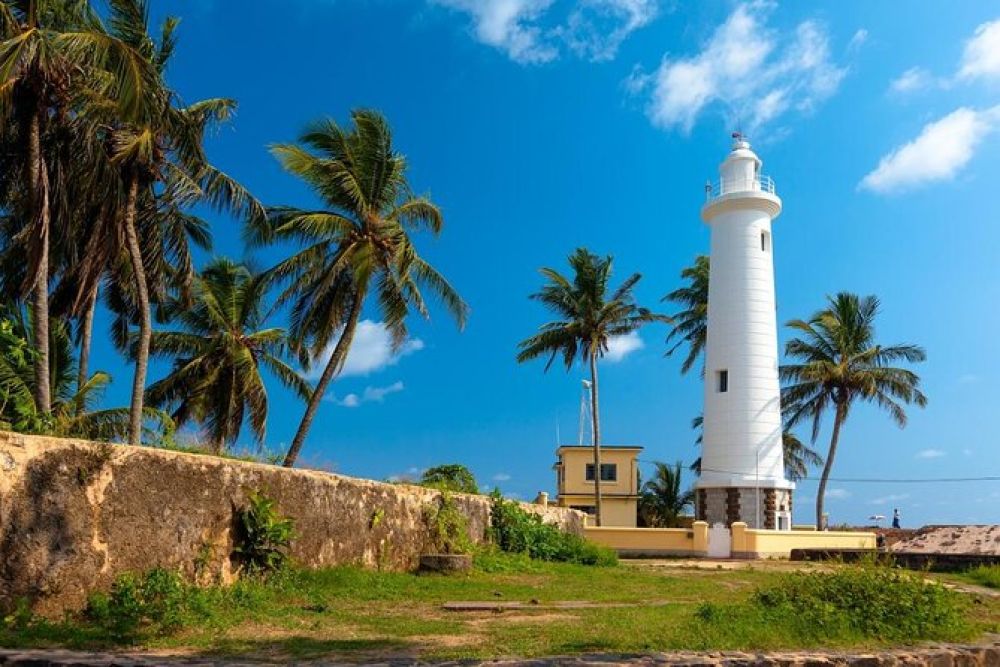

The Galle Lighthouse stands as an emblematic figure within the historic Galle Fort in Sri Lanka. It is one of the island's most iconic landmarks and a testament to its colonial past and maritime heritage.
The original lighthouse was built in 1848 by the British, making it the oldest light station in Sri Lanka. However, it was destroyed by fire in 1934. The current lighthouse was erected in 1939 and is situated about 100 meters away from the original site. Throughout the years, it has guided countless ships through the treacherous waters surrounding Galle, and it currently stands as a significant historical monument within the Galle Fort, which is a UNESCO World Heritage Site.
The history of tourism around the Galle Lighthouse corresponds closely with the wider development of the tourism industry in Sri Lanka. Since the late 20th century, the Galle Fort area has seen a steady increase in tourists, attracted by its amalgamation of Dutch, Portuguese, and British colonial architecture and the natural beauty of the surrounding coastlines.
The devastating 2004 Indian Ocean tsunami did significant damage to the region, but the fortified walls of the Galle Fort, including the area around the lighthouse, remarkably withstood the disaster. The resilience of the fort and its structures became a symbol of Sri Lanka’s strength and recovery, bringing in a new wave of visitors keen to see the historic city's recovery.
In recent years, Sri Lanka has seen a resurgence in tourism, with sustainability and eco-tourism becoming increasingly prominent. Visitors to the Galle Lighthouse are not only interested in the history, but also in supporting environmentally responsible tourism that respects the local culture and heritage.
Additionally, there's been a growing interest in experiential travel. Tourists are now seeking authentic experiences over merely sightseeing. In response, tour operators in Galle are offering immersive experiences such as guided walks within the fort, traditional Sri Lankan cooking classes, and artisan workshops that celebrate local crafts and skills.
The government and local authorities are also capitalizing on digital trends, utilizing social media and online platforms to promote destinations like the Galle Lighthouse. Virtual tours, online galleries, and interactive apps are enhancing the visitor experience even before tourists set foot in Galle.
While the lighthouse itself is not open to the public for interior tours due to operational reasons, visitors can still enjoy its picturesque presence and the stunning ocean views from the lighthouse premises. The Galle Lighthouse remains an enduring attraction for travelers to Sri Lanka, offering a beautiful blend of scenic beauty, historical significance, and cultural depth.